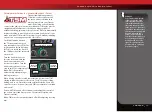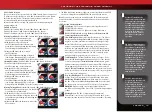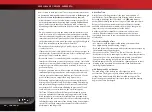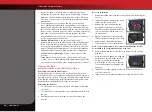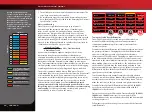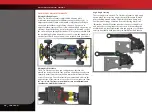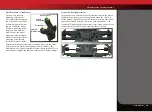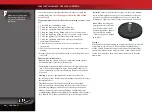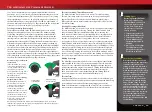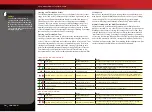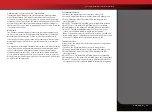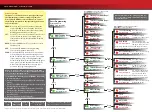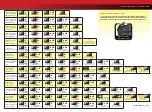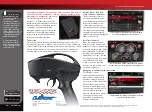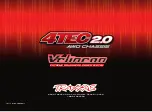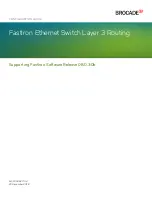
TRAXXAS • 23
ADJUSTING YOUR MODEL
Once you become familiar with driving your model, you might need
to make adjustments for better driving performance
Adjusting Gear Mesh
Incorrect gear mesh is the most
common cause of stripped spur
gears. Your model includes a fixed
gear positioning system to simplify
the process and ensure proper gear
mesh settings. Access the gears
by removing the four 3x12mm
button-head cap screws from the
gear cover; remove the gear cover.
Remove the motor/motor plate
assembly from the chassis.
To set the gear mesh, use the chart
in the sidebar to identify the screw
positions on the motor plate (A - K)
that correspond with the chosen
motor pinion gear size. Remove the two screws from the motor/
motor plate and reinstall in the corresponding positions; reinstall
the motor/motor plate assembly in the chassis.
Shock Mounting Positions
Big bumps and rough terrain
require a softer suspension
with the maximum possible
suspension travel and
ride height. Racing on a
prepared track or on-road
use requires a lower ride
height and firmer, more
progressive suspension
settings. The more progressive suspension settings help reduce
body roll (increased roll stiffness), dive during braking, and squat
during acceleration. The suspension of your model has been set up
for on-road performance.
Fine Tuning the Shocks
The four shocks on the model greatly
influence its handling. Whenever
you rebuild your shocks or make any
changes to the pistons, springs, or
oil, always make changes to them in
pairs (front or rear). Piston selection
depends on the range of oil viscosities
that you have available. For example,
using a two-hole piston with a
lightweight oil will, at one point, give
you the same damping as a three-hole
piston with heavier oil. We recommend
using the two-hole pistons with a
range of oil viscosities from 10W to
50W (available from your hobby shop).
The thinner viscosity oils (30W or less) flow more smoothly and are
more consistent, while thicker oils provide more damping. Use only
100% pure silicone shock oil to prolong seal life. The model’s ride
height can be adjusted by adding or removing the clip-on, spring
pre-load spacers. Adjust the ride height so that the suspension arms
are slightly above being parallel to the ground. Observe how the
model handles in turns. Proper set-up will add stability and help
prevent spin outs. Experiment with different springs and shock oils to
find what works best for your current track conditions.
Centering Your Servo
If the trim controls on your transmitter seem off, you may need to
re-center your servo. Additionally, whenever your servo has been
removed for service or cleaning, it must be re-centered prior to
installation in the model.
1. Disconnect the servo horn from the steering servo.
2. Connect the steering servo to channel 1 on the receiver. Connect
the electronic speed control (ESC) to channel 2.
3. Place fresh “AA” batteries in the transmitter and turn the
transmitter power switch on.
4. Turn off TSM (see page 17).
5. Turn the steering trim adjustment on the transmitter to the center
“0” position.
6. Elevate the model on a block or stand so that all of the tires are
off the ground. Connect a fresh battery pack to the speed control
and turn on the ESC (see page 18). The servo will automatically
jump to its center position.
Pre-load
Spacer
Screw
Positions
Pinion
Gear Size
*
Pinion
Gear Size
**
Pinion
Gear Size
†
A
34-T
27-T
19-T
B
35-T
28-T
20-T
C
-
29-T
21-T
D
-
30-T
22-T
E
-
31-T
23-T
F
-
32-T
24-T
G
-
33-T
25-T
H
-
34-T
26-T
I
-
35-T
27-T
J
-
-
28-T
K
-
-
29-T
*
for use with 55-T spur gear only
**
for use with 62-T spur gear only
†
for use with 70-T spur gear only
A
A
B
B
C
C
D
D
E
E
F
F
G
G
H
H
I
I
J
K
J
K
Summary of Contents for 4-Tec 2.0
Page 35: ...TRAXXAS 35 ...









